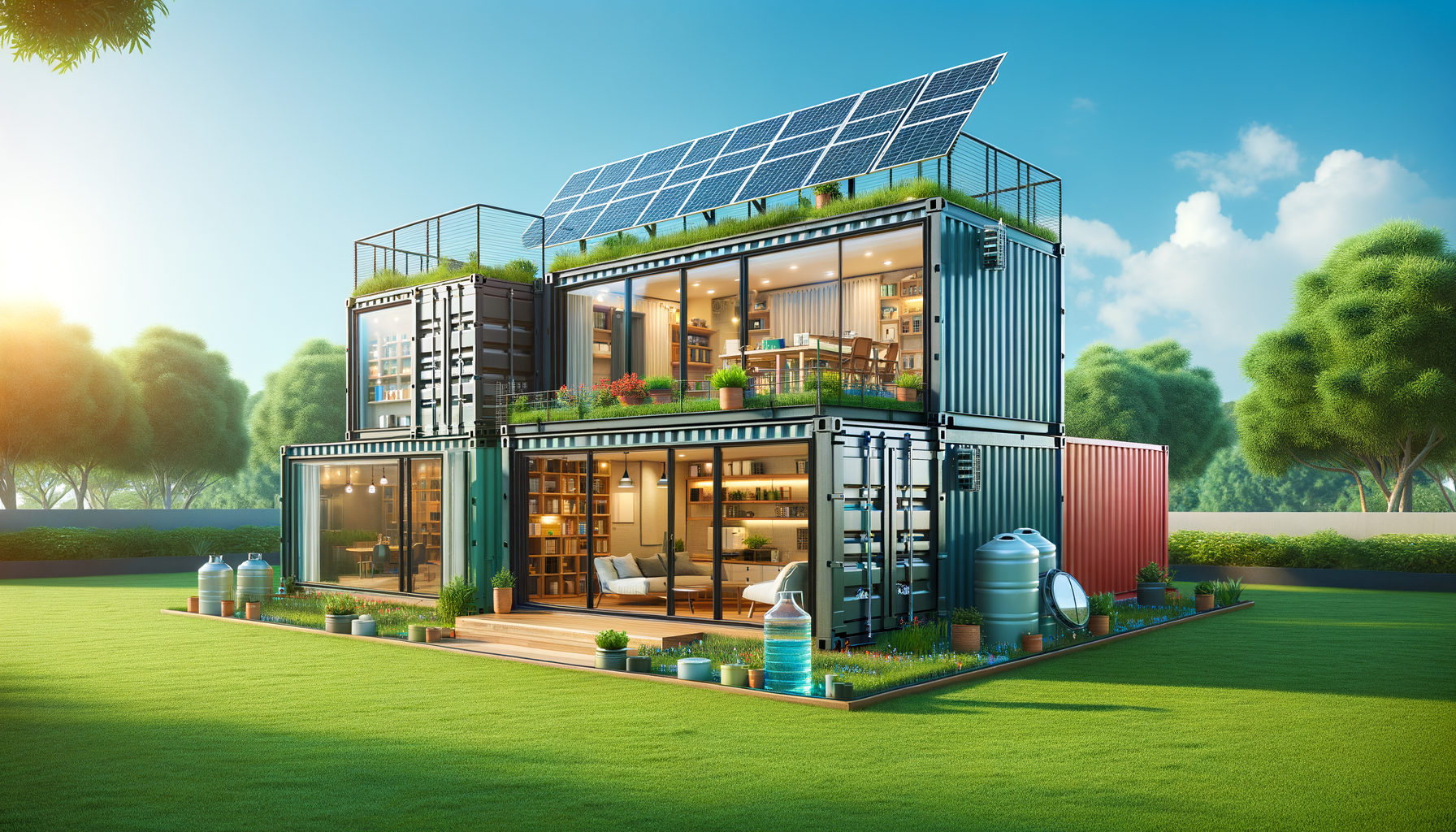Introduction to Container Homes
In recent years, the concept of container homes has gained significant traction as an innovative solution to modern housing challenges. These homes, constructed from repurposed shipping containers, offer a unique blend of sustainability, affordability, and style. As urban areas face increasing pressure to provide affordable housing without expanding their carbon footprint, container homes emerge as a viable alternative. Their modular nature allows for creative architectural designs, making them not only functional but also aesthetically pleasing.
The appeal of container homes lies in their ability to be both eco-friendly and cost-effective. By reusing containers that would otherwise sit idle, they reduce waste and promote recycling. Additionally, the cost of building a container home is often lower than traditional construction methods, making them an attractive option for budget-conscious individuals. As we delve deeper into the world of container homes, we’ll explore their benefits, design possibilities, and the challenges they present.
The Environmental Benefits of Container Homes
Container homes offer several environmental advantages, making them a popular choice for eco-conscious homeowners. One of the primary benefits is their ability to reduce waste. Shipping containers, typically made of steel, are durable and long-lasting. By repurposing these containers into homes, we can significantly decrease the number of unused containers cluttering ports and landfills.
Moreover, the construction process of container homes is less resource-intensive compared to traditional building methods. They require fewer building materials, which in turn reduces the overall environmental impact. The modular nature of containers also allows for efficient use of space, minimizing the need for large plots of land. This is particularly beneficial in urban areas where space is limited.
Additionally, container homes can be designed to incorporate sustainable features such as solar panels, green roofs, and rainwater harvesting systems. These features further enhance their eco-friendly credentials, providing homeowners with the opportunity to live sustainably without compromising on comfort or style.
Cost-Effectiveness and Financial Considerations
One of the most compelling reasons to consider a container home is its cost-effectiveness. The initial cost of purchasing a used shipping container is relatively low compared to traditional building materials. This affordability extends to construction costs as well. Since containers are already structurally sound, the need for expensive foundations and framing is significantly reduced.
Furthermore, the construction timeline for container homes is typically shorter, which can lead to savings in labor costs. Many container homes are prefabricated, allowing for off-site construction and quick assembly once delivered to the site. This efficiency not only saves time but also reduces the potential for delays and unexpected expenses.
For those looking to finance a container home, it’s important to note that while they are generally more affordable, securing a mortgage or loan can sometimes be challenging. Lenders may be unfamiliar with this type of construction, so it’s essential to work with financial institutions that have experience in alternative housing solutions. Nonetheless, the long-term savings on utilities and maintenance make container homes a financially sound investment.
Design Possibilities and Aesthetic Appeal
Container homes are celebrated for their versatility in design, offering a wide range of aesthetic possibilities. Their modular nature allows homeowners to stack, arrange, and customize containers to create unique living spaces that reflect personal style and functional needs. From minimalist single-container studios to expansive multi-container family homes, the design options are virtually limitless.
Architects and designers often use the industrial look of containers to their advantage, incorporating exposed steel and clean lines into modern, sleek designs. Interior spaces can be tailored with high-quality finishes, insulation, and energy-efficient systems to ensure comfort and luxury. Large windows and open-plan layouts can enhance the sense of space and light, creating an inviting atmosphere.
For those seeking a more traditional appearance, containers can be clad in various materials such as wood, brick, or stucco, seamlessly blending with the surrounding environment. This adaptability makes container homes suitable for diverse settings, from urban landscapes to rural retreats.
Challenges and Considerations
While container homes offer numerous benefits, they are not without challenges. One of the primary concerns is insulation. Shipping containers are made of metal, which can lead to issues with temperature regulation. Proper insulation is crucial to ensure comfort in both hot and cold climates, and this can add to the overall cost of the home.
Another consideration is zoning and building codes. Regulations vary widely by location, and some areas may have restrictions on using containers as residential structures. It’s essential to research local laws and obtain the necessary permits before beginning construction.
Additionally, the structural integrity of used containers must be assessed. Containers that have been used for shipping may have dents, rust, or other damage that needs to be addressed. Ensuring that the containers are in good condition is vital for the safety and longevity of the home.
Despite these challenges, the growing interest in container homes continues to drive innovation in design and construction techniques, making them an increasingly viable option for modern living.




Leave a Reply